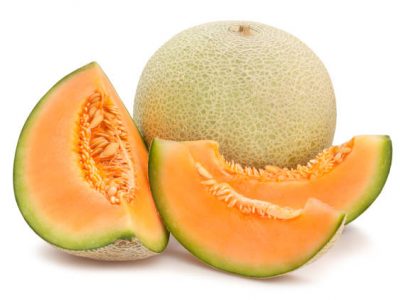Project Report For Muskmelon Fruit
Introduction
Project Report for Muskmelon Fruit is as follows.
Muskmelons, botanically known as Cucumis melo, are a melon category that includes many Cucurbitaceae family melon cultivars. Most melons in the Cucumis melo species are referred to as Muskmelons by scientists, and the variants vary in size, shape, texture, and flavor. Muskmelons are also known as Sweet melons, and cantaloupes, honeydews, Persian melons, Casaba, Spanspek, Santa Claus melons, Galia, and Crenshaw melons are examples of Muskmelons. Muskmelon is a generic name that refers to a variety of melons grown for fresh markets around the world.
Muskmelons range in flavor from sweet, musky, and fragrant to mild, slightly bland, and faintly sweet, depending on the type, and are suitable for both fresh and cooked recipes. The flesh of the melon ranges from firm and crisp to luscious and succulent, and this sensory component will influence which recipes the variety is employed in. Muskmelons are normally eaten raw and can be flavored with black salt, honey, or cardamom.
Melon slices are also served with yogurt and mint as a delightful appetizer, brunch, or snack. Try slicing and throwing the meat into salads, using it as a topping for pancakes, parfaits, or ice cream, or pureeing it into cold soups. Muskmelons with firmer flesh can be cut into salsas, balled and blended into fruit bowls, or wrapped in salty cured meats. Muskmelons in general can be prepared into sauces, blended and frozen into sorbet and popsicles, or pureed with other ingredients to produce a pudding.

Benefits of Muskmelon Fruit
Muskmelon is a highly nutritious fruit that is rich in vitamins and minerals. It is a good source of Vitamin C, which is essential for maintaining a healthy immune system, and potassium, which is important for maintaining heart health. It is also low in calories, making it a good option for people who are watching their weight.
Muskmelon is a versatile fruit that can be used in a variety of ways, making it a popular ingredient in Indian cuisine. It is often used in the preparation of sweet and savory dishes, as well as drinks and desserts. The fruit is also used as a garnish or decoration for various dishes, adding both flavor and visual appeal to the dish.
Muskmelon has a lot of water, which helps to keep your body hydrated during the hot summer months. It also keeps the body cool and protects it from heat. It ensures a sufficient quantity of vitamins and minerals. Muskmelon can assist to strengthen and boost the immune system, making it easier for the body to fight sickness. It is high in Vitamin C and A, which improve immunity by stimulating the body’s white blood cells. Vitamin A and phytochemicals aid in the health of your gut. Your immune system and intestinal health are inextricably linked.
Project Report Sample on
Muskmelon Fruit
Get Completely Custom Bankable Project Report
Market Potential Of Muskmelon Fruit
The melon seed market was worth USD 693.45 million in 2021 and is predicted to be worth USD 1122.05 million by 2029, growing at a CAGR of 6.20% over the forecast period.
Despite its popularity, there are still some challenges facing the muskmelon industry in India. One of the main challenges is the lack of proper storage facilities, which often leads to spoilage and waste. Another challenge is the lack of standardization in the industry, which can result in inconsistent quality and prices for the fruit.
The Muskmelon Market is examined from every viewpoint, employing both primary and secondary research methodologies. This helped us grasp current market dynamics, supply-demand imbalances, pricing trends, product preferences, customer habits, and so forth. Primary study with industry professionals and opinion leaders from around the world confirmed the findings. Following that, the data is compiled and validated using various market estimation and data validation techniques. Furthermore, we have an in-house data forecasting algorithm that can project market growth through 2030.

